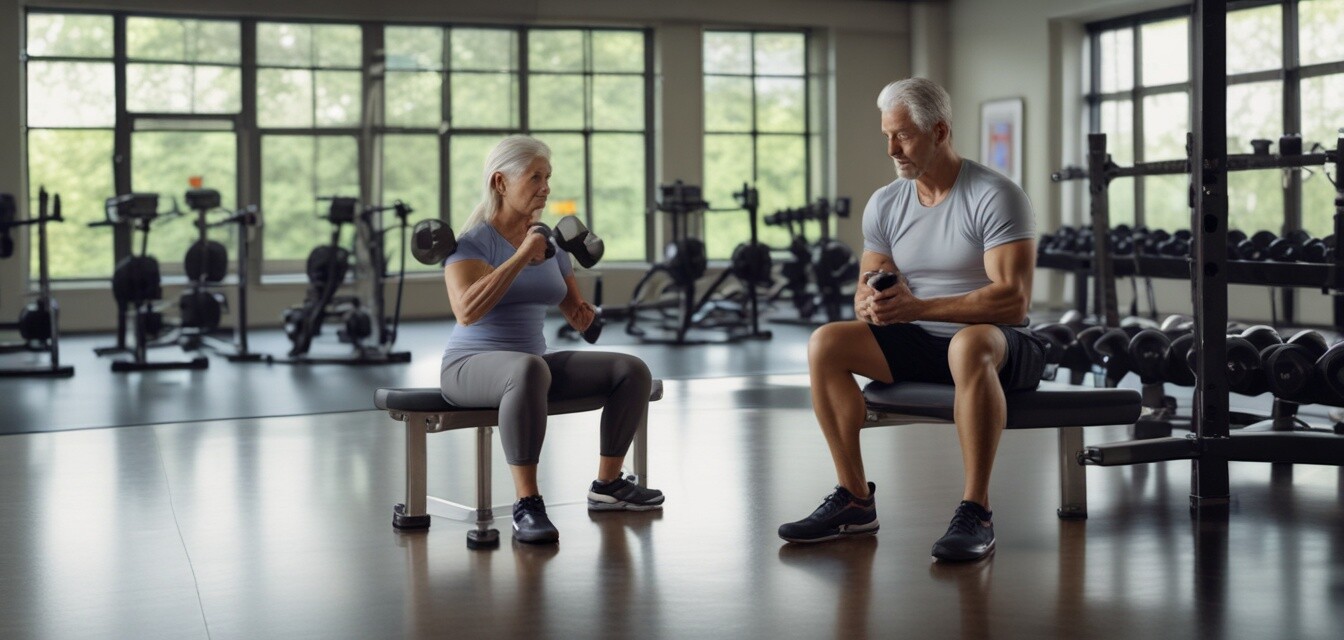
Navigating weightlifting techniques for seniors
Key Takeaways
- Prioritize safety and technique to avoid injury.
- Warm-up and cool-down routines are crucial for every workout.
- Using proper equipment enhances safety and efficiency in workouts.
- Listening to your body is vital for a successful training experience.
- Consult with a healthcare provider before starting any new exercise regimen.
As we age, staying active becomes more crucial than ever. Strength training helps maintain muscle mass and promotes overall well-being. However, for seniors, ensuring safety and effectiveness during workouts is essential. In this article, we discuss essential weightlifting techniques that prioritize safety for seniors during workouts. Let's explore how seniors can navigate this fitness journey with confidence!
The importance of proper technique
Proper technique is vital in weightlifting for seniors to avoid injuries and maximize the benefits of strength training. Here are a few essential aspects to consider:
- Focus on form over weight.
- Use a full range of motion for each exercise.
- Maintain a neutral spine to reduce stress on the back.
Key techniques to master
Here are some key techniques to master for safe weightlifting:
| Technique | Description |
|---|---|
| Squats | Stand with feet shoulder-width apart; lower your body by bending at the knees while keeping your back straight. |
| Push-ups | Start in a plank position and lower your body towards the ground using your arms, then push back up. |
| Deadlifts | Stand with feet hip-width apart; bend at the hips and knees to lift a weight off the ground while keeping your back straight. |
Warm-up and cool-down routines
Incorporating warm-up and cool-down routines is essential to prepare the body for exercise and aid recovery afterward.
Warm-up exercises
- Gentle stretching for major muscle groups.
- Low-intensity cardio, such as walking or cycling.
- Dynamic movements like arm circles and leg swings.
Cool-down exercises
- Static stretching to improve flexibility.
- Deep breathing to relax the body.
- Gradual reduction of physical activity intensity.
Choosing the right equipment
Using the right equipment is crucial for safe and effective strength training. Here are tips on selecting equipment:
- Dumbbells: Ideal for building strength, start with lighter weights.
- Resistance bands: Versatile and great for low-impact exercises.
- Yoga mats: Provide cushioning and support for floor exercises.
Listening to your body
One of the most important aspects of weightlifting for seniors is to listen to your body's signals. This means:
- Taking breaks when necessary.
- Adjusting workout intensity based on how you feel.
- Seeking advice from qualified trainers when unsure about an exercise.
Safety considerations
Understanding safety considerations can prevent accidents during workouts. Here are some key points:
- Always check equipment for damage before use.
- Use non-slip footwear to prevent falls.
- Stay hydrated throughout your workout.
Pros
- Enhances strength and flexibility.
- Improves overall health and independence.
- Social engagement through group workouts.
Cons
- Risk of injury without proper technique.
- May require professional guidance.
- Potentially expensive equipment costs.
Conclusion
Weightlifting can be a fulfilling and beneficial endeavor for seniors when approached with care and attention to safety. By mastering proper techniques, warming up and cooling down, choosing the right equipment, and staying attuned to your body, seniors can confidently embark on their strength training journey. For more safety tips and guides, explore our articles in the Safety Tips category and consider checking out additional exercise equipment that can support your training!